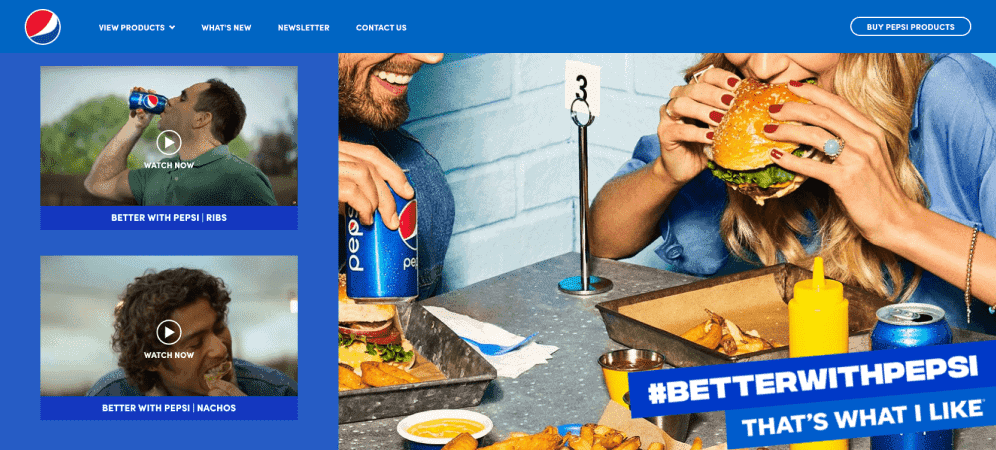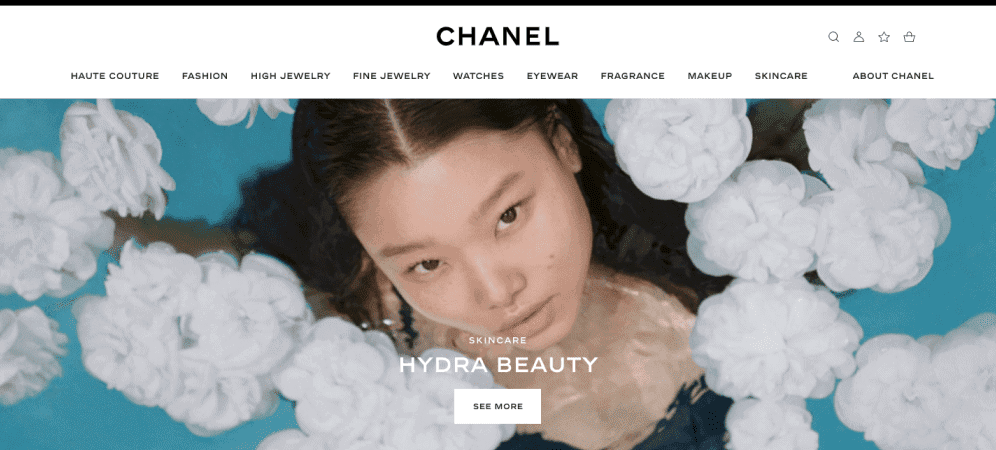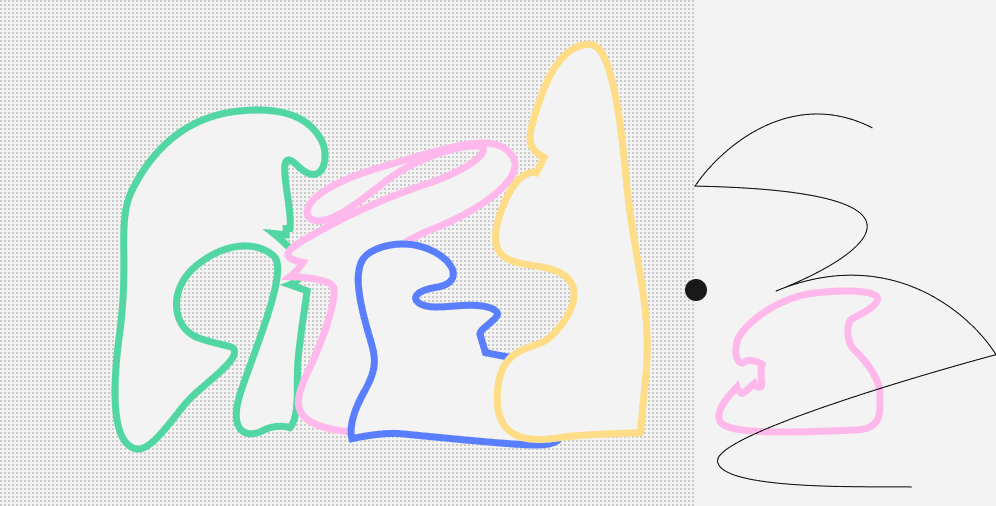Outline:
When selecting brand colors, personal preference should not be the only consideration. Research shows that colors play a crucial role in marketing and can significantly impact consumer behavior. A well-planned strategy for color selection can help create a memorable and impactful business image. In this article, we will explore how to choose brand colors, their meanings, and the emotions they evoke, allowing you to make informed decisions and create a lasting impression on your customers.
Tips on How to Choose Brand Colors to Boost Your Business’s Visibility
Brand color is a critical component of corporate identity, alongside the motto and logo, serving as a product identifier in the minds of consumers. Bright and recognizable ones help companies stand out from the sea of competitors and attract their target audience more effectively. Psychology experts have long established that people remember visual images better than any lexical meaning embedded in a business name.
It’s essential to remember that to strengthen company branding and identity, brand colors should be applied not just to the logo but also to the website, storefront, in-store design, staff uniforms, and advertisements. This approach creates a cohesive and consistent branding strategy, solidifying the brand image in the minds of consumers.
The science behind brand colors and how to use it to your advantage
In a world of progress and a vast number of businesses producing and offering similar products, companies must find a way to win the hearts of buyers, distinguish themselves from competitors, and remain in the minds of consumers long after the purchase. The answer lies in brand colors.
The Impact of Color on Marketing study found that approximately 90% of brand judgments are based solely on color. Various color hues and their combinations can change a person’s psychological and physiological state, evoking specific emotions through various associations.
As a result, they can shape the consumer’s attitude towards the product based on the emotions that the color provokes. Therefore, choosing the right one is key to providing the most positive customer experience and motivating them to make a purchase.
The relationship between colors and emotions is studied by color psychology, a notion we will explore in more detail.
80% of Brand Recognition Comes from Color: How to Choose Brand Colors That Work
The psychology of color is a fascinating area of study that explores how different color hues can affect our thoughts, feelings, and behaviors. For example, a study conducted by the University of Rochester found that warm colors like red, orange, and yellow can stimulate appetite and increase energy levels, while cool colors like blue and green can have a calming effect and promote relaxation.
In marketing and branding, understanding the psychology of color is crucial in creating an effective brand identity that resonates with consumers. Research shows that color can increase brand recognition by up to 80%, making it a critical factor in brand identity. Different colors can evoke specific emotions and associations that can influence consumer perception of a brand, its products, and its values. For instance, a study conducted by the University of Loyola found that it can improve brand recognition by up to 87%, and that color impressions can account for up to 60% of a brand’s acceptance or rejection. Blue is often associated with trust, professionalism, and reliability, making it a popular choice for financial institutions and healthcare companies.
Color also plays a vital role in visual communication and can help convey a brand’s message and personality. When choosing brand colors, it’s essential to consider the industry, target audience, and competition to ensure that the colors reflect the brand’s values and goals while standing out from competitors. According to a survey by the Pantone Color Institute, 80% of people believe that color increases brand recognition, and 84.7% believe that color is essential to brand identity.
Overall, understanding the psychology of color is essential for creating a successful brand identity that captures the attention and loyalty of consumers. According to a study by the University of Loyola, it can increase brand recognition by up to 80%, making it a critical factor in brand identity. By choosing the right colors that reflect the brand’s values and goals, companies can create a powerful and memorable brand that stands out in a crowded marketplace.
Beyond Red and Blue: Innovative Approaches to Choosing Brand Colors That Captivate Your Audience
Color plays a crucial role in brand identity, and it is often the first element that consumers notice. As such, companies must choose their brand colors carefully to create a strong visual identity that resonates with their target audience.
While there are no strict rules for choosing brand colors, it’s essential to consider the industry in which the company operates, as well as the target audience. For example, warm colors like red and orange are often used in the food industry because they stimulate appetite, while cool colors like blue and green are common in the healthcare industry because they promote a sense of calm and trust.
At the same time, companies can use color to differentiate themselves from competitors and create a unique brand identity. For instance, FedEx’s use of purple and orange in their logo stands out in the shipping industry, which typically uses blue and red.
When choosing brand colors, it’s crucial to consider the psychology of color and the emotions that different hues can evoke. Blue, for example, is often associated with trust, loyalty, and professionalism, while yellow is associated with optimism, energy, and happiness. By selecting colors that align with the brand’s values and personality, companies can create a powerful and memorable brand identity that resonates with their target audience.
Overall, choosing brand colors is a critical aspect of developing a strong brand identity that stands out in a crowded marketplace. By understanding the industry, target audience, and psychology of color, companies can make informed decisions that create a visual identity that resonates with consumers and creates a lasting impression.
From Research to Recognition: How to Determine Your Brand Identity and Choose the Right Colors
Brand identity refers to the unique characteristics that visually distinguish a brand from others. While corporate and brand identities are related, they are not the same thing. Brand identity is primarily aimed at visual recognition, while the corporate identity has a broader scope that includes elements such as name, motto, and brand guidelines.
To develop a brand identity, companies must conduct research and answer questions about their brand history, goals, target audience, and desired customer experience. This information will help companies understand how to apply colors to communicate their message effectively, as colors are linked to emotions, memories, and associations.
In addition to selecting appropriate colors, companies can make a list of adjectives that describe their brand and evoke the desired emotions. The color and hue of a website are also crucial in creating a unique and recognizable brand identity that instills trust and a positive attitude among customers.
By choosing the right colors and applying them consistently across various brand elements, companies can create a powerful and memorable brand identity that stands out from the competition. In the following sections, we’ll discuss how different colors can be used to communicate specific brand messages and evoke desired emotions in customers.
Boosting Your Brand: How to Choose Colors That Benefit Your Business
Colors play a significant role in building a brand identity, and their benefits cannot be overlooked. First and foremost, selecting color combinations that are easy to remember and differentiate from competitors is crucial. Studies have shown that customers are more likely to choose a brand with a logo that is instantly recognizable. Therefore, companies must choose colors that make their brand stand out and are not used by competitors.
Moreover, color is a powerful tool that can evoke specific emotions and influence customer response. Companies must use colors that grab and retain customer attention and create a positive emotional response. The right brand colors can help convey the company’s message nonverbally and highlight essential elements on the page, making it easy for customers to comprehend and engage with the brand.
To create a successful brand, companies must conduct a thorough analysis and follow a specific strategy. Understanding the psychology of colors and their associations is crucial in creating a powerful brand identity that resonates with customers. In the following sections, we will explore the ten most popular colors and their associations with specific industries to help companies determine the best color(s) to use in their branding and marketing campaigns.
How to Choose Brand Colors: A Look at the Top 10 Colors and Their Meanings
When it comes to selecting brand colors, it’s important to consider their associations and the emotions they evoke. The top 10 brand colors and their associations are as follows:
Red: Love, anger, power, passion, strength, fear, and excitement. Most suitable for the food (Coca-Cola) and entertainment (Netflix) industries.
Blue: Trust, loyalty, logic, space, coldness, and formality. Considered to be one of the safest colors and can be used in any business field.
Green: Peace, life, harmony, nature, health, growth, and stability. Can be applied to convey any message desired but commonly found in the beauty sphere (Garnier), ecology (Greenpeace), and pharmaceutical (Actavis) industries.
Yellow: Enjoyment, fun, happiness, warmth, and positivity. Used in industries dealing with beverages (Lipton), fast food (McDonald’s), optical equipment (Nikon), and sweets (Chupa Chups).
Orange: Playfulness, optimism, openness, creativity, and communication. Often observed in the corporate identity of companies operating in children’s products (Gymboree), entertainment (Nickelodeon), and food products (Fanta).
Purple: Wisdom, power, dignity, fantasy, royalty, and spirituality. Utilized in IT industries (Yahoo!), food products (Milka), and real estate (Zoopla).
White: Purity, health, simplicity, cleanliness, and peace. Great for minimalistic brands and commonly used in fashion (Adidas), gadgets (Apple), and medicine (MediPath).
Black: Sophistication, seriousness, control, and independence. Often used by premium luxurious brands, such as Chanel, Hugo Boss, and Ralph Lauren.
Gray: Reliability, security, modesty, balance, and maturity. Neutral and often applied in car industries (Toyota), fashion (Calvin Klein), jewelry (Swarovski), and technologies (WordPress).
Brown: Seriousness, comfort, support, earthiness, warmth, and sturdiness. Popular among companies related to food production and sale (M&M’s), construction (SK Builders), agriculture (Joyce Farms), and construction (O’Sullivan Property).
While these associations are helpful when choosing website design, companies must also consider their specific goals and brand identity when selecting brand colors. A guideline to assist in this complex task will be discussed in the following sections.
The Science Behind Color Psychology: How to Choose the Perfect Color Palette for Your Brand
When developing a website, choosing the right color palette is crucial in building a brand association and creating a cohesive design. To guide this process, companies should consider the following color palette guidelines:
Primary color
The primary colors are typically used in the company logo and should reflect the website’s main concept to attract potential customers. Companies usually have around two to three primary colors.
Plan on choosing three colors
To create a harmonious color palette, companies should choose a base, accent, and neutral color. Regardless of the number of colors included, variations in hues and shades should also be considered.
Choose your base
The base color should communicate the brand’s major feature and attract the target audience. The remaining colors should complement this color.
Select your accent
Choosing an accent color is more challenging since it should match the brand personality and complement the base color.
Find your neutral
Neutral colors, such as pastels, white, and black, should not be distracting and are often used for a background.
Black and white
While black and white are commonly used in designs, they should not be overused as too much black can create negative emotions, and too much white can feel cold and isolated. These colors should be used in balance to effectively convey the brand message.
While companies can choose any number of colors, the website should not only be visually appealing but also efficient. By following these guidelines, companies can create a color palette that accurately reflects their brand identity and effectively communicates with their target audience. Once the primary color is determined, the next step is to choose the secondary colors that complement and accentuate the primary color.
From Monochromatic to Contrasting: How to Choose the Best Color Scheme for Your Brand
The choice of secondary colors is dependent on the color scheme, which is a set of rules for combining colors to express a desired emotion or effect or convey the company’s message. This scheme consists of colors or hues and shows their correlation, such as similarity or contrast. There are three basic color schemes: monochromatic, analogous, and contrasting.
The monochromatic color scheme uses only one base color, and variations of that color are used. This scheme creates a neat and graceful impression, but it may be difficult to highlight important elements due to the lack of color contrast.
The analogous color scheme uses two secondary colors that are similar to the base color and found next to it on the color wheel. The base color dominates while secondary colors are used to highlight or emphasize critical elements, creating a calm and eye-pleasing design.
Contrasting color schemes are one of the most popular schemes today, built using opposite or complementary colors or equally bright colors. These schemes add contrast to the design and make the brand upbeat and friendly.
While these schemes differ in color application, they all require careful consideration to avoid creating a messy and disorganized website.
To assist in deciding how to use primary and secondary colors, let’s discuss the proportions in which they should be used.
Maximizing the Impact of Your Brand Colors: Tips for Finding the Right Color Proportions
To create a well-balanced design, it’s important to consider the proportions of the brand colors. The primary color(s) should take up the most space in the design, followed by secondary colors of medium size, and finally, a tertiary color that blends the primary and secondary colors (or two secondary colors).
Here are the recommended proportions for brand colors:
- For three colors, one primary color should take up 1/2 of the space, while two secondary colors get 1/4 each (a 50:25:25 ratio).
- For four colors, two primary colors should each take up 1/3 of the space, one secondary color should take up 1/6, and one tertiary color should take up 1/12 (a 33:33:16:8 ratio).
Once the colors are chosen, it’s important to test their compatibility and ability to complement each other. This can be done within the company’s team or through research among customers, such as through a questionnaire or feedback. Testing is crucial to ensure that the chosen colors create a coherent and appealing design.
Choosing Brand Colors: Understanding the Significance of CMYK, Pantone, RGB, and HEX Codes
Colors can be represented in both light (pixels) and ink (dyes). To ensure that brand colors are accurately and consistently represented in all formats, companies should be aware of the color codes that should be used.
CMYK and Pantone codes are used to communicate colors through ink, such as in printing. CMYK is more widespread and simpler to use, while Pantone is more expensive and complex but can produce impressive results such as special effects, neons, and metallic effects.
For digital formats, such as websites, RGB and HEX codes are used to communicate colors on various gadget screens. These codes are similar in functionality and applicability.
While it’s not necessary to have a deep understanding of these codes, companies should be aware of their differences and applications to ensure that the colors effectively communicate the intended message to the audience.
After understanding the theoretical and practical aspects of color codes, it’s time to look at examples of successful brand colors.
Top 10 Brand Colors
01 McDonald’s
The bright red, cheerful orange and warm yellow colors of this fast-food giant are extremely attractive since they create a feeling of joy and happiness along with a positive and friendly atmosphere. Moreover, these colors (and their combination) are considered to be the most popular among children.

02 Netflix
Netflix used a pretty standard combination of brand colors (white, red, and black) on their website. The application of red color on a black background brings us back to the world of cinema. Moreover, the choice of such powerful colors makes it impossible to forget the brand style itself.

03 Starbucks
Green color with its hues are most commonly associated with growth and peace and this concept perfectly echoes Starbucks’ mission which is “to inspire and nurture the human spirit”. Furthermore, the combination of green and yellow colors may cause associations with the sun and earth, thus, making the website look natural and organic.

04 Coca-Cola
The combination of red and white colors immediately evokes the association with Coca-Cola. It may seem that there are only two brand colors applied (white and red), however, the red color we see on their logo and products is the result of the mixture of three different red hues.

05 Pepsi
Just like its main competitor (starts with C, wink wink), some time ago Pepsi had the same brand colors – white and red. The times have changed and now the primary colors of Pepsi are red, white, and blue. These colors help to perceive the company image as something that pushes for action (red) and simultaneously gives customers feelings of peace (blue) and freedom (white).

06 Ikea
Ikea is one of the most world-known furniture companies in the world. The choice of colors was based on the country of origin (Sweden) and its flag colors (yellow and blue). The combination of a cheerful yellow with calm blue evokes associations with comfort and safety.

07 Hershey
The primary color of Hershey is brown which immediately calls to mind an image of chocolate. This is a great example of applying the color that reflects the main activity of the company (since the chocolate itself is brown). Moreover, the brown color tends to be associated with stability and authenticity.

08 SubWay
Unlike its fast-food colleagues, Subway applied green and yellow brand colors. It’s done not only to differentiate themselves from the rest but also to emphasize (with the help of green color) the freshness and naturalness of the products they use in preparing food.

09 Mastercard
The primary colors that are used in this brand are red and orange. Here the red color stands for bravery, passion, and joy while the orange one denotes prosperity. Together these colors communicate the company message. Mastercard believes that these personality traits are typical for people who want to become successful financially (don’t we all?).

10 Chanel
There is a reason why black and white are the primary colors of Chanel. The black color stopped being perceived as a color of sorrow and grief thanks to Gabrielle Chanel when she created a little black dress thus showing the elegance of this color. Nowadays black color is used by many luxurious brands to outline the high class and prestige of their products. The white color, in its turn, complements the black one.

The examples of famous companies along with the brand colors applied are intended to show how various color combinations in diverse industries can make the business profitable, unforgettable, and beneficial. We hope that they will serve as an inspiration as well as a motivation for you.
On a Final Note
In this article, we’ve shared with you our extensive expertise in brand colors and the critical role they play in creating a successful and engaging website. Choosing the right colors for your branding can be a daunting task that requires in-depth knowledge and expertise to make your company stand out from the competition.
At Ester Digital, we pride ourselves on being recognized experts in this field. Our team of experienced professionals is dedicated to helping you create a brand that not only stands out but also resonates with your target audience. With our guidance, you can avoid costly marketing mistakes and make sure that your brand colors communicate the right message to your customers.
If you’re looking to take your brand to the next level, look no further than Ester Digital. Our team is always ready to lend a helping hand and provide you with the guidance you need to create a successful and profitable brand. Contact us today to learn more about how we can help you achieve your branding goals.





